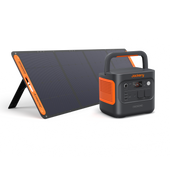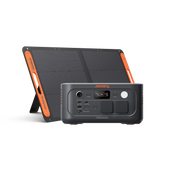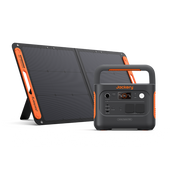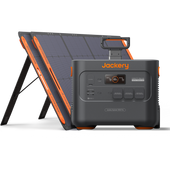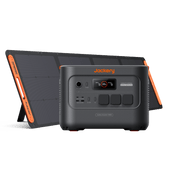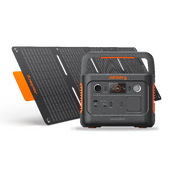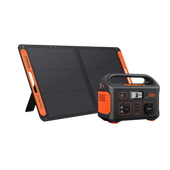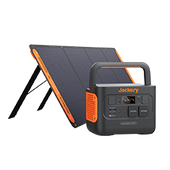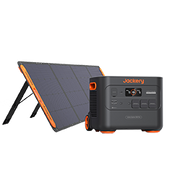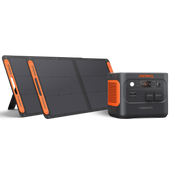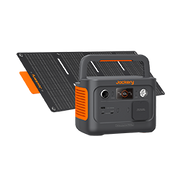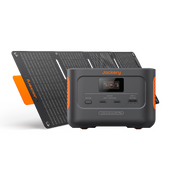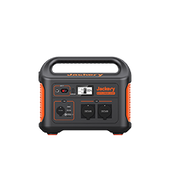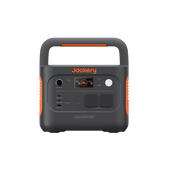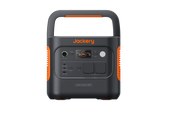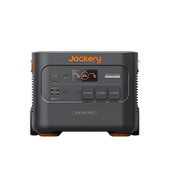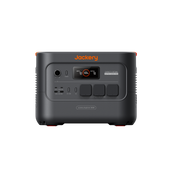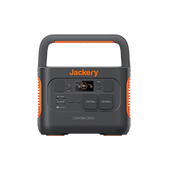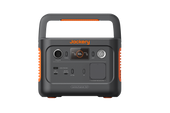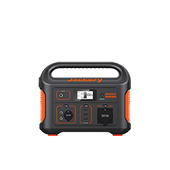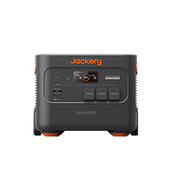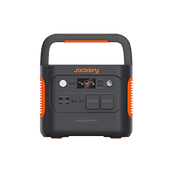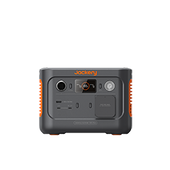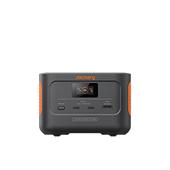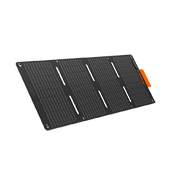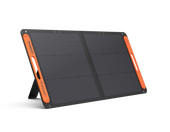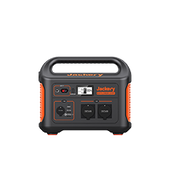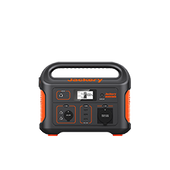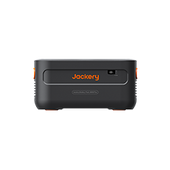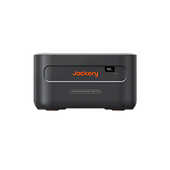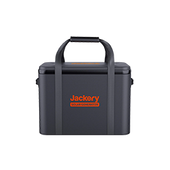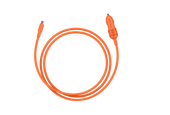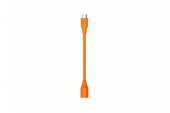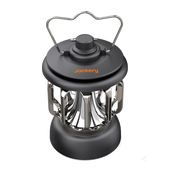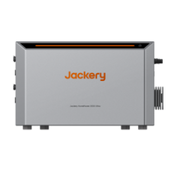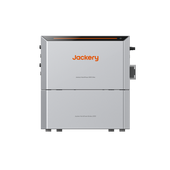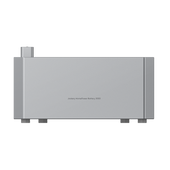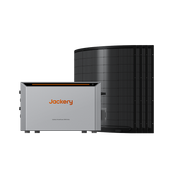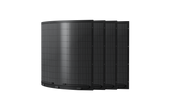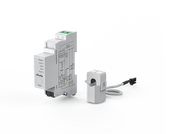How Many Solar Panels Are Needed for Your Roof?
Solar power systems have gained immense popularity recently due to their numerous benefits. Using solar energy to produce clean and sustainable power is both eco-friendly and an economical choice in the long term. Homeowners and outdoor users increasingly embrace renewable energy, and understanding the conversion efficiency of solar panels becomes crucial. This article will explore the concept of conversion efficiency and its significance in determining the number of solar panels needed for your residence. Additionally, we will delve into how many solar panels to power a house.

What Should Be Considered When Deciding the Number of Solar Panels
- When considering the number of solar panels needed for your residence, it's essential to consider your household's electricity consumption. The number of electrical appliances and devices used in your home directly affects the electricity required. A larger number of appliances or energy-intensive devices like air conditioners, refrigerators, and electric heaters will demand more electricity. Consequently, more solar panels will be needed to meet the higher energy demand.
- It will be helpful to calculate the average electricity consumption of your home to determine how many and what capacity solar panels you need. This can be done by reviewing past utility bills or using an online electricity usage calculator. Once you estimate your daily or monthly energy consumption in kilowatt-hours (kWh), you can determine the number of solar panels required based on their wattage and the average amount of electricity they can generate daily.
- Please note that solar panels do not have a constant output throughout the day. Their energy production is influenced by sunlight intensity, weather conditions, and panel orientation. Consequently, solar energy systems generate the most electricity during peak sunlight hours, typically around midday when the sun is highest in the sky. Considering this, you may need to install additional panels to compensate for lower energy production during morning and evening hours.
How to Classify the Types of Solar Panels
a) Solar Panel Types by Efficiency
b) Solar Panel Types by Capacity
c) Solar Panel Types by Cost
Factors Affecting Solar Panel Efficiency
a) Sunlight: The Fuel for Solar Panels
As mentioned above, the solar panels' monocrystalline silicon cells and multi-layered cell technology enable a conversion efficiency of 23%~24.3%, which allows them to outperform conventional panels that just claim to be the best.
b) Dust and Dirt: Cleaning for Optimal Performance
Accumulated dust and dirt on the surface of solar panels can significantly reduce their efficiency and solar power systems capacity. Regularly cleaning and maintaining solar panels is important to ensure optimum performance. Keeping the panels clean allows more sunlight to reach the solar cells, maximizing their electricity generation capacity.
c) Snow: Winter Challenges for Solar Panels
In snowy climates, solar panels may face challenges during the winter months. Snow accumulation on the panels can obstruct sunlight and hinder their efficiency. However, it's worth noting that solar panels are designed to be durable and are often installed at an angle to facilitate snow shedding. Additionally, snow's reflective properties can enhance solar panels' overall performance on sunny winter days.
d) Age: Evaluating Long-Term Performance
As solar panels age, their efficiency may gradually decrease. The rate at which the panels degrade is influenced by different factors, such as their quality and the conditions of the environment that they are experiencing. While most solar panels come with a warranty guaranteeing a certain level of performance over a specific period, it's essential to consider the long-term performance when choosing a solar energy system.
e) Orientation and Tilts: Maximizing Sun Exposure
The orientation and tilt of solar panels significantly impact their efficiency. To make the most of sun exposure, solar panels are usually placed facing south in the northern hemisphere while north in the southern hemisphere. Additionally, adjusting the tilt angle to your location helps optimize sunlight absorption and energy generation.
How Many Solar Panels Do I Need for a House Roof?
It hinges on many factors, such as the number of electrical appliances used at home, electric car charging, daily consumption needs, and consumption hours. We will consider the average electricity consumption and the solar panel's capacity to determine the number of solar panels needed for your 100m2 house with standard household equipment for a 3-person family.
- First, let's estimate the average electricity consumption for a typical 3-person family. A household consumes around 8,000 to 12,000 kilowatt-hours (kWh) of electricity annually. Dividing this by 365 days, we get an average daily consumption of approximately 22 to 33 kWh. [1]
- Next, we need to consider the capacity of the solar panels. Residential solar panels typically have capacities ranging from 250 to 400 watts. Let's assume an average panel capacity of 300 watts for our calculation.
- To determine the required quantity of solar panels, we can utilize the subsequent formula:
-
For a daily consumption of 22 kWh:
Number of Panels = 22 kWh / (0.3 kW * 5 hours) ≈ 14.67 panels
-
For a daily consumption of 33 kWh:
Number of Panels = 33 kWh / (0.3 kW * 5 hours) ≈ 22 panels
Based on this calculation, you would need approximately 15 to 23 solar panels for your 100m2 house, depending on your average daily consumption.
- Please note that it is only a rough estimate. The number of panels needed may vary based on the panels' efficiency, geographical location, shading, panel orientation, and local weather conditions. Additionally, it's recommended to consult with solar professionals or reliable companies like Jackery to conduct a detailed analysis and design a solar power system tailored to your specific energy needs and roof space.
- By installing the appropriate number of solar panels, you can generate clean and renewable energy, reduce your reliance on the grid, and save on electricity bills while contributing to a greener future.
What Is the Number of Solar Panels Connected to Jackery?

Jackery Solar Generator 2000 Pro

Jackery Solar Generator 3000 Pro
Jackery's Solar Panels: A Great Selection With Long Lifespan
When choosing solar panels for your energy needs, longevity, and quality are key factors. Jackery's solar panels are an excellent selection combining high performance and a long lifespan. Jackery, a leading provider of innovative solar power systems and energy solutions, offers a range of solar panels designed to meet the diverse requirements of homeowners. Some of the prominent features of Jackery solar panels, the most preferred solar panel manufacturer in Europe, are as follows.
a) Jackery's Solar Panels: Long Lifespan
b) Jackery's Solar Panels: Durability
c) Jackery's Solar Panels: Innovation
d) Jackery's Solar Panels: Ease of installation
e) Jackery's Solar Panels: Eco-friendliness
Conclusion
In the final section, we would like to include a few questions frequently encountered by homeowners, including the process and options when deciding to buy a solar power system and install solar panels on their roofs. One frequently asked question is, "Can I install solar panels if my roof is shaded?" It's important to note that while shading can impact solar panel performance, solutions are available. Innovative companies like Jackery offer solar panels with advanced shading tolerance and optimization technologies, maximizing energy production even in less-than-ideal conditions.
Reference:
[1] How Many Solar Panels Do I Need To Power a House?
Available at:
https://www.solar.com/learn/how-many-solar-panels-do-i-need-to-install/ (Accessed: 31 May 2023)
Best-selling Jackery Solar Panels
Hurry up! Sale ends once the timer hits zero

